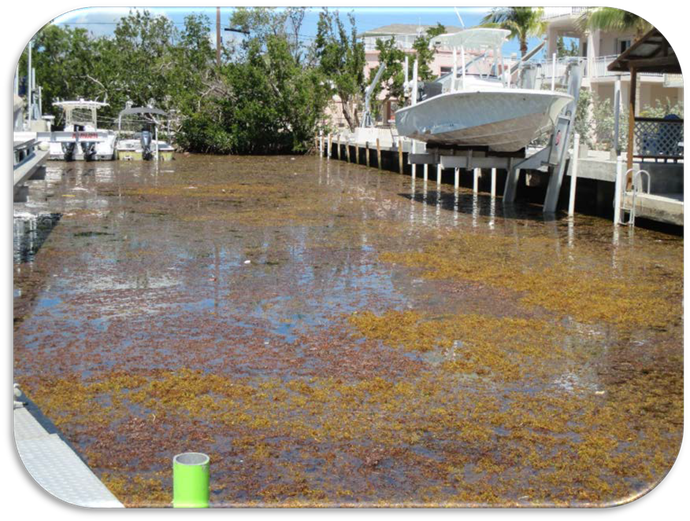MONROE COUNTY AWARDED WATER QUALITY PROJECT GRANT TO INVESTIGATE BARRIER TECHNOLOGY FOR SARGASSUM IN CANALS
MONROE COUNTY, FL – The U.S. Environmental Protection Agency (EPA) recognized Monroe County as one of the recipients of two South Florida Geographic Initiative (SFGI) Program grants. The grants are for projects that support protection and restoration of water quality, corals and seagrass in South Florida.
Monroe County was awarded $149,995 to be used for the following three tasks:
1) Seaweed Barrier Technology Evaluation: review of available potential technologies for floating vegetation control, and most appropriate technologies selected to augment or supplant the current standard design that will achieve the greatest improvement in energy efficiency and system reliability and/or offer similar protection against surface weed invasion but at a lower cost for the operations and maintenance;
2) Canal Workplan Bridging Documents: development that connect the goals and objectives of the State’s Department of Economic Opportunity Canal Work Plan with the technical directives presented in the Monroe County Canal Restoration Guidance Document; and
(3) Develop a Sargassum Control Master Plan – Phase 1: create a framework for managing, removing, and disposing of the sargassum loading throughout the Florida Keys. The barrier technology will be investigated to address the record amounts of sargassum seaweed smothering residential canals in recent years. Although Sargassum is not toxic, as it decomposes it produces hydrogen-sulfide gas that is released that can be problematic to those with asthma or respiratory conditions, as well can causes fish kills, smothers beaches, and diminished tourism.
“Monroe County is pleased to be able to implement these grant funds to develop a sargassum master plan and barrier methods that will ultimately help us control the huge influx of sargassum that invades the canal system in the Florida Keys every summer, choking our waterways and causing serious water quality and breathing issues,” said Monroe County Chief Resilience Officer Rhonda Haag.
The University of Central Florida in Orlando was also awarded a $199,984.50 grant for a monitoring program to screen for pesticides, UV filters (sunscreen), pharmaceutical products, and hydrocarbons in South Florida during wet and dry events from land-based sources of pollution. Data will be used to provide recommendations for management actions for the Florida Keys National Marine Sanctuary (FKNMS) Water Quality Protection Program and the Southeast Florida Coral Reef Initiative programs.
SFGI grants are used to fund projects for the FKNMS Water Quality Protection Program, Southeast Florida Coral Reef Initiative, Caloosahatchee Estuary, Indian River Lagoon, Florida Bay and Biscayne Bay.
For more information on the SFGI RFA, visit www.grants.gov. For more information on canal and water quality projects in the Florida Keys, visit www.monroecounty-fl.gov/canals.
[livemarket market_name="KONK Life LiveMarket" limit=3 category=“” show_signup=0 show_more=0]



No Comment